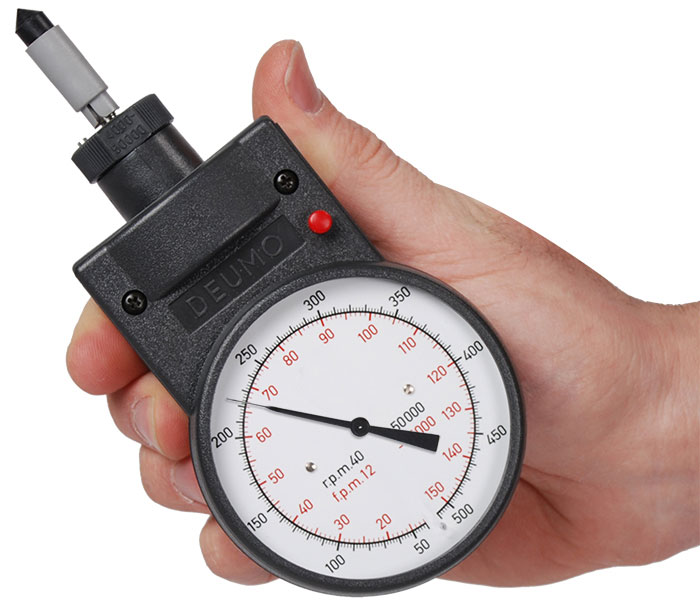Opening the Keys of Tachometers: Every Little Thing You Required to Understand About This Vital Instrument in Your Car
Understanding the intricacies of tachometers can provide valuable understandings right into your car's performance and upkeep needs. From determining engine rate to deciphering the information it offers, tachometers act as an important tool for lorry proprietors and enthusiasts alike. By unraveling the enigmas behind this necessary instrument, you can open a wide range of info that can enhance your driving experience and ensure the long life of your car.
Importance of Tachometers
The value of tachometers hinges on their ability to give important real-time data concerning an engine's rotational speed, permitting specific surveillance and maintenance of machinery. By determining the changes per minute (RPM) of an engine's crankshaft, tachometers offer useful insights right into the engine's performance - tachometer. This data is crucial for guaranteeing that the engine operates within its optimum variety, staying clear of prospective damages from over-revving or underperforming
Tachometers play an important duty in helping drivers and technicians find any kind of anomalies in the engine's rate, which could suggest concerns such as fuel ineffectiveness, mechanical troubles, or excessive stress on the engine. By promptly determining these concerns through tachometer readings, upkeep can be performed proactively, stopping pricey repair work and downtime in the lengthy run.
Moreover, tachometers are particularly vital in high-performance lorries and machinery, where accurate control over engine speed is essential for optimal operation. Racing cars and trucks, airplane, and commercial equipment depend on tachometers to provide peak efficiency while preserving safety and security criteria. Essentially, tachometers are not just instruments for measuring speed but vital devices for making certain the smooth and reliable procedure of engines throughout numerous applications.
Just How Tachometers Action Engine Rate
Utilizing sensors that detect the regularity of electrical pulses generated by the engine's ignition system, tachometers precisely measure the rotational rate of an engine. By keeping an eye on the rate at which these pulses are obtained, tachometers supply real-time comments on how quick the engine's crankshaft is turning per minute, generally referred to as revolutions per min (RPM)
The tachometer's sensor, usually linked to the engine's ignition coil or spark plug cords, picks up the electric signals produced each time a cyndrical tube fires. These signals are then converted into RPM analyses showed on the scale or instrument collection within the chauffeur's sight. Tachometers can be analog or digital, with modern-day lorries generally featuring electronic display screens for exact and instantaneous RPM analyses.
This information is vital for drivers to comprehend the engine's efficiency, avoid over-revving, maximize gear moving, and make certain efficient gas consumption. By precisely gauging engine speed, tachometers play a crucial duty in helping motorists run their vehicles safely and successfully.
Interpreting Tachometer Readings
Having a clear understanding of exactly how tachometers measure engine speed establishes the structure for efficiently interpreting the RPM analyses showed. Interpreting tachometer analyses is critical for ideal car efficiency and engine health and wellness. When the engine is idling, the tachometer needle usually rests around 600-1000 RPM, navigate to this website depending on the lorry.


Tips for Making Use Of Tachometers Successfully
To enhance driving performance and enhance engine efficiency, what secret strategies can be carried out for efficiently making use of tachometers? Tachometers are important devices that offer real-time responses on engine speed, enabling motorists to make informed choices for better performance - tachometer. Below are some suggestions for making use of tachometers effectively:
Comprehending Optimum RPM Range: Familiarize yourself with the ideal RPM (Changes Per Minute) range for your car. Maintaining the engine within this array can enhance gas performance and lengthen the engine's lifespan.
Moving Gears at the Correct Time: Make use of the tachometer to establish the very best time to shift gears. Upshifting as well very early or far too late can cause lowered efficiency and efficiency. Goal to change equipments when the RPM gets to the optimum array for the following equipment.
Monitoring Engine Stress: High RPMs for prolonged durations can stress the engine. Maintain an eye on the tachometer to stop over-revving, specifically throughout velocity or when bring hefty tons.
Tachometers and Car Maintenance
When thinking about vehicle upkeep, tachometers play an essential duty in keeping an eye on engine performance and finding potential concerns. Tachometers give necessary data on engine rate, allowing motorists and mechanics to make sure that the engine is operating within the suggested RPM array.
Along with identifying prospective concerns, tachometers can also help in maximizing fuel performance. By keeping the engine speed within the optimum range, motorists can boost their gas mileage and reduce fuel intake. This not only benefits the motorist's wallet but likewise adds to environmental conservation by lowering hazardous exhausts.
Conclusion
